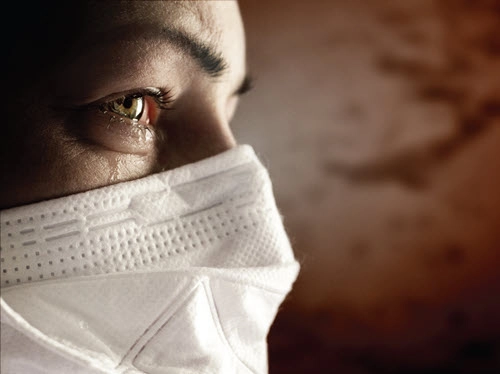Prioritize Staff Needs to Ensure Care
Try these tips to bolster your staff’s resiliency. The long-term care industry has a notoriously high rate of staff turnover, and the COVID-19 pandemic is only exacerbating lack of trust and burnout, especially for staff who provide direct care, as well as those whose responsibilities have been altered in the midst of the pandemic. With facilities needing to provide stable, high-quality care for their residents, any shortages or shakeups in staffing are particularly tough to weather. Providers have recounted stories of staff leaving with the first positive COVID-19 diagnosis, and talking about how outbreaks have impacted residents and staff all at once, upending stability, says Shannon Cupka, EdM, improvement advisor at Comagine Health, in a July Quality Improvement Organization (QIO) webinar on Managing Staffing Challenges. “In this industry, we’re used to putting others’ needs first and are not the best about asking for help when we need it,” Cupka says. Note How Care Has Intensified A lot of the aspects of direct care involved in working with people with frail bodies or compromised immune systems are intimate — one cannot physically distance and still assist with toileting, etc. But other aspects of care that used to be easier to manage in group settings are now complicated by infection control guidance, Cupka points out. Some care activities simply take a lot longer, like having to serve meals individually instead of communally or building time into each shift to don and doff personal protective equipment (PPE), she says. Other, more “administrative” tasks are also taking more time, like auditing infection control practices, figuring out how and when to cohort residents when appropriate, and facilitating visits for residents via technology. All of these work and care burdens come with costs. Facilities are having to spend more to cover the cost of traveling nurses, hazard pay, screening and/or testing of staff and auxiliary personnel, not to mention the expensive and difficult endeavor of securing PPE and other supplies to keep everyone safe. Acknowledge Staff Stressors However, staff are grappling with various costs, too — financial, mental, physical, and emotional. Many staff are trying to navigate personal stressors that have long gone unacknowledged by the long-term care industry and society at large. A Henry J. Kaiser Family Foundation study on long-term care workers shows that the long-term care workforce is made up mostly of women paid low wages. Nearly 4 in 10 are over the age of 50 and 1 in 4 workers are Black. Almost 6 in 10 long-term care workers have employment-based health coverage; 19 percent are covered by Medicaid and 12% are uninsured. All of these factors are at play during a pandemic where jobs require close contact with older and frequently medically frail people, and circumstances may leave staff fewer options for maintaining their own personal safety, both inside and outside of work. The demographics of much of the long-term care workforce means that many staff themselves are personally at risk for more severe or complicated COVID-19 disease, if they were to become infected. “Historically, we’ve left the personal stuff at the door, however with this pandemic, we’re seeing how personal and socioeconomic factors, health access disparities, and human behaviors are very much intertwined, and require us to think creatively to find solutions,” Cupka says. Be Accountable — and Creative Focus on transparency, facilitating open lines of communication, and maintaining or establishing a culture that promotes trust, Cupka says. If rumors are going around about infection rates, etc., do your best to address and dispel them. Make staff education a priority, but keep communication open so everyone feels empowered to be honest about any concerns and that anything problematic will be addressed. Several studies have shown that nursing facility outbreaks reflect community spread locally, which underscores the significance of the impacts of each individual staff member’s choices and behaviors. Promote a culture of trust, accountability, and risk mitigation by making sure employees feel seen, heard, and safe. Facilities can take creative approaches to helping staff, like adjusting scheduling so shift changes don’t line up with other professions so public transport is less crowded or organizing carpooling or ridesharing for staff members, Cupka suggests. Adrienne Butterwick, MPH, CHES, an improvement advisor at Comagine Health, provides additional ideas for keeping staff safe and comfortable while COVID-19 continues to spread. Facilities can try to figure out incentives for staff who work on COVID-19-positive units, provide clean rooms for donning and doffing PPE, as well as general clothes changing and facility uniform laundering, and even procure on-site RVs so staff can rest or change comfortably and even stay in, if necessary, she says. Some facilities have approached the COVID-19 pandemic by investing heavily in staff — and therefore resident — safety. A Connecticut assisted living facility, Shady Oaks, truly sheltered in place from late March, offering staff huge bonuses to live on-site for two months, and avoiding any COVID-19 infections throughout the state’s spring peak. The facility’s owner, Tyson Belanger, says in a community letter that he spent $250,000 in personal savings, as well as $215,000 in donated cash and in-kind assistance, and $343,000 from the Payroll Protection Program on staff payroll and supplies. Although such an intensive effort is not possible for most facilities, nor sustainable for any, the efforts show how investing in staff safety is a crucial aspect of keeping residents safe, too.


